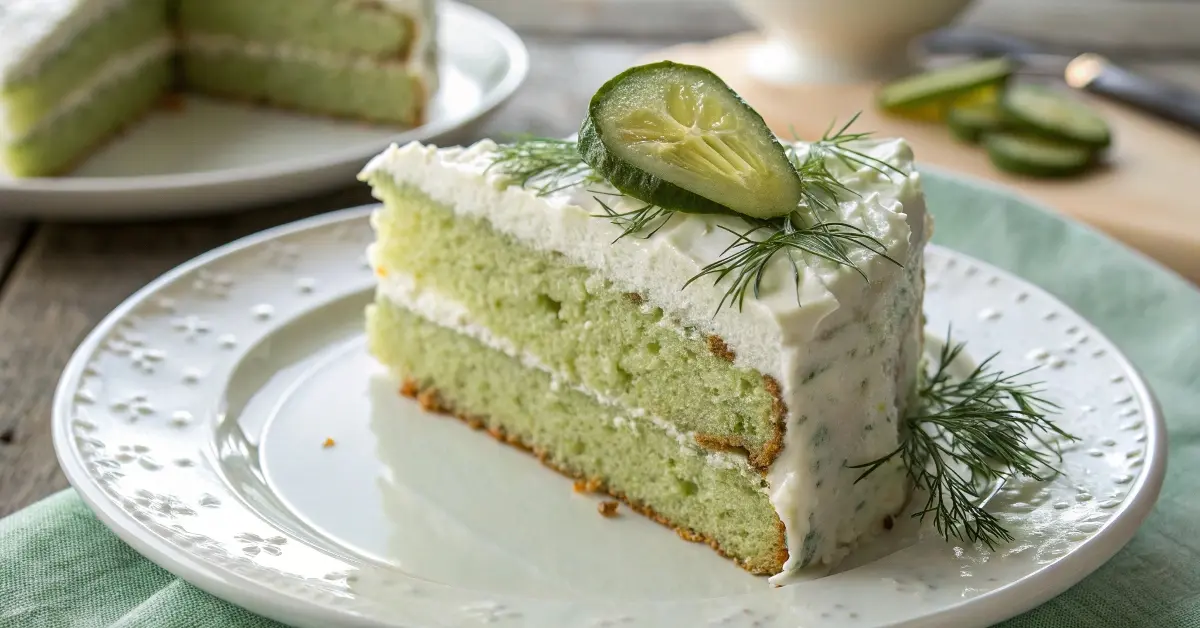Let’s get real—the idea of pickle cake sounds wild. I first stumbled on a viral recipe that mixed sour cream, pickle juice, even diced pickles into a cupcake batter, and I was equal parts horrified and intrigued. So what exactly does a pickle cake taste like?
Pickle cupcakes taste like a faint echo of dill and tang—crisp and briny up front, followed by a surprisingly subtle sweetness and familiar cakey richness. They’re not overwhelmingly salty or vinegary, but you definitely notice that pickle edge. Some tasters describe them as the love‑child of dill a quiche and a lightly sweet muffin
If you’re curious (or chasing that TikTok culinary dare), try swapping in just a tablespoon of juice per cup of batter to start. The result is more cake than condiment—bizarre, yes, but beginner‑friendly and oddly nostalgic for those who grew up drinking pickle juice shots—or baking fun comfort food.
In the next section, we’ll break down the 3‑2‑1 rule for pickles, show how that brine ratio shapes flavor intensity in your cake, and explore how to tweak it to create anything from mildly tangy loaves to daringly savory sweet breads.
Table of Contents
The 3-2-1 Rule – How Brine Builds Flavor
To understand why pickle cake works (and why it doesn’t taste like a dare gone wrong), we’ve got to look at what’s in the brine. Enter the 3-2-1 pickle rule—a foundational ratio for making pickles at home. It stands for 3 parts water, 2 parts vinegar, and 1 part sugar.
This ratio creates a balanced brine that’s tangy but not too sour, lightly sweet but still acidic. It’s what gives pickles their classic flavor: not just salty or vinegary, but sharp, rounded, and a little sweet. And when that brine enters a cake recipe, it affects everything—from the crumb texture to the way sugar interacts with acidity during baking.
In baking, acid can do magical things. It activates leaveners like baking soda, helps with browning, and enhances flavor depth. A teaspoon or two of pickle juice (based on a 3-2-1 brine) adds that brightness without overwhelming the palate.
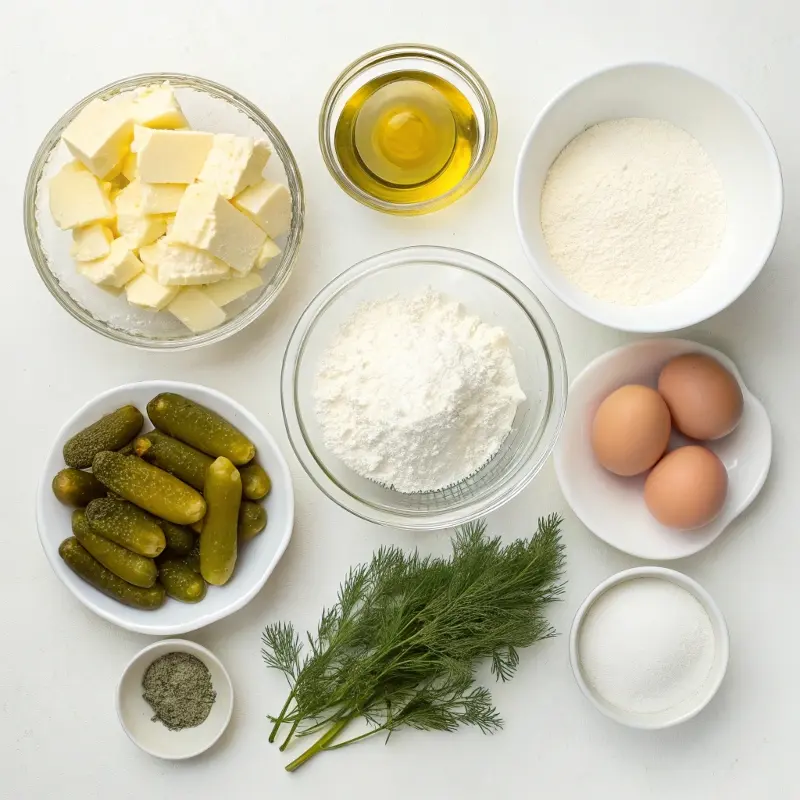
Want to experiment? Here’s a simple brine intensity table to guide you:
| Brine Strength | Flavor Result in Cake |
|---|---|
| 3-2-1 (classic) | Mildly tangy, subtly sweet, balanced |
| 2-2-1 (stronger vinegar) | Sharper bite, more acidic finish |
| 3-1-1 (sweeter) | Sweeter, less tang, almost dessert-like |
Adjust based on your taste or intended audience. The classic 3-2-1 mix gives just enough pickle punch to keep things interesting. Up next? Why Gen Z can’t stop baking with brine—and how pickle cake became a micro-trend in online kitchens.
Gen Z’s Pickle Obsession – A Flavor-First Rebellion
Pickles have become more than a snack—they’re now a full-blown cultural statement. Especially for Gen Z, who’s embracing sharp, intense flavors in unexpected ways. From pickle popcorn to frozen pickle pops, bold brine is trending—and yes, it’s even landed in cake batter.
Why the sudden love for something so vinegary? It’s all about flavor adventure. This generation grew up with a wide range of global cuisines, so their palate naturally leans toward extreme combinations. Think tangy and sweet, spicy with cool, salty layered into desserts. For Gen Z, something like a pickle cake doesn’t feel weird—it feels like the next fun thing to try.
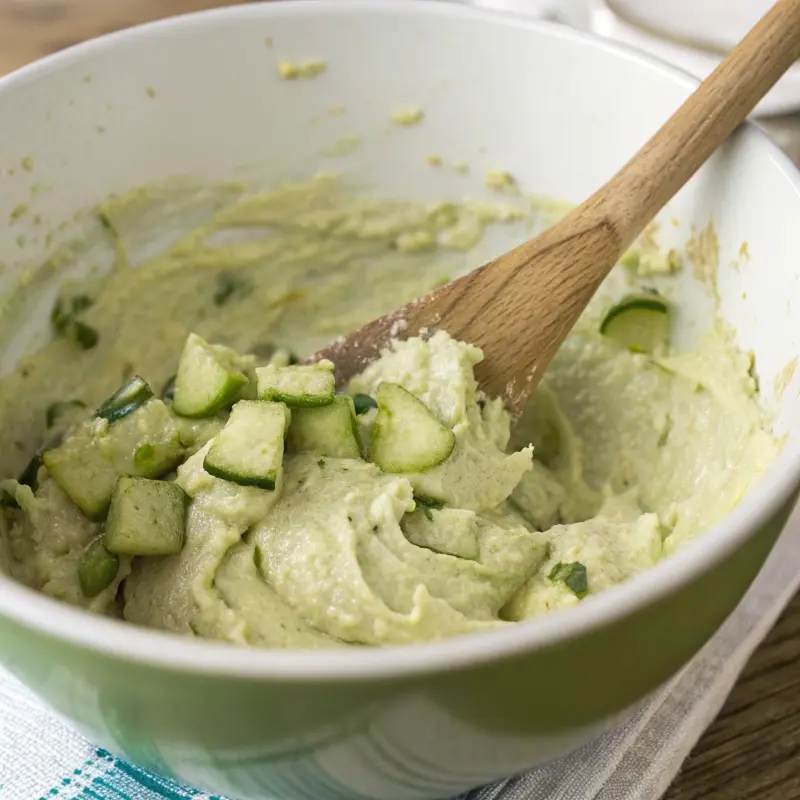
It also helps that pickle recipes tend to blow up online. Social platforms like TikTok are filled with “pickle challenge” videos where creators bake pickle cupcakes, add brine to brownies, or invent snacks that feel outrageous but turn out strangely tasty. It’s culinary rebellion—meant to entertain as much as nourish.
But there’s more behind the trend than social buzz. Pickles also tap into nostalgia for many younger eaters. Pickle juice as a drink, school lunches with dill chips, or spicy pickle snacks were part of their childhood. Turning those flavors into dessert? That’s innovation with a wink—and just enough flavor drama to keep things interesting.
In the next section, we’ll explore an unexpected connection between pickle cakes and hummingbird cakes—two very different recipes with one surprising thing in common: the element of surprise.
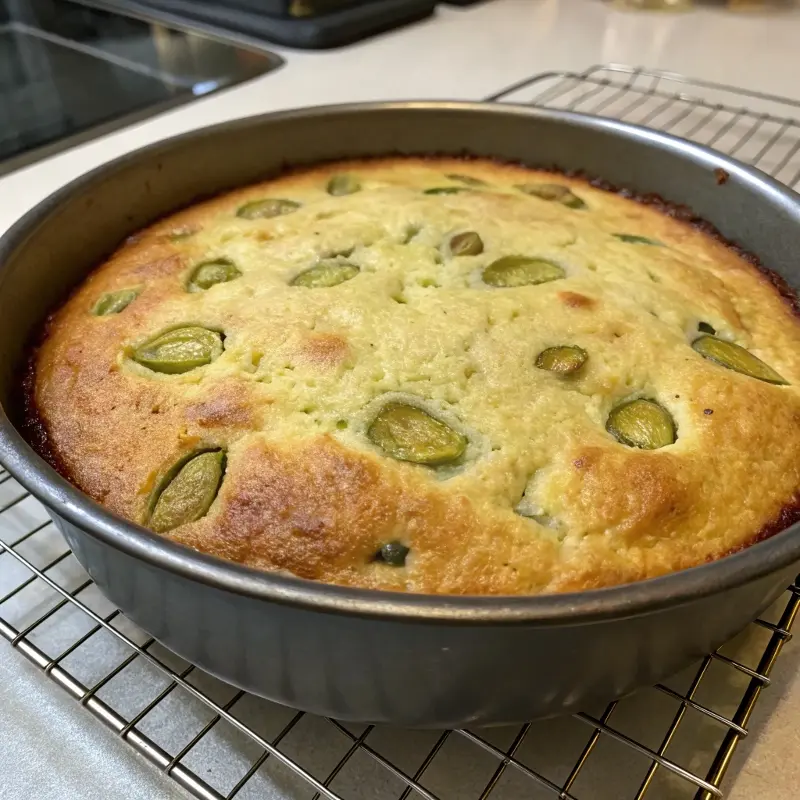
What’s Hummingbird Cake Got to Do with It?
At first glance, hummingbird cake and pickle cake have nothing in common. One is a Southern classic made with bananas, pineapple, and warm spices. The other is a tangy, modern twist built on dill and vinegar. But both actually tell a bigger story—one about naming, curiosity, and unexpected flavor combos that go viral.
Let’s start with the name. Why is it called hummingbird cake? Turns out, this rich dessert got its name from Jamaica, where the hummingbird is the national bird. The cake first appeared in the U.S. in the 1970s when it was featured in Southern Living magazine, and it became a hit because it was dense, sweet, and spiced—something people weren’t used to seeing in a banana cake.
Sound familiar? That’s the same spirit pickle cake carries today: different, bold, and just strange enough to spark curiosity. Like hummingbird cake once did, it challenges what dessert can taste like—and more importantly, what people expect from a slice of cake.
In both recipes, unexpected ingredients work together to create balance. In hummingbird cake, crushed pineapple adds moisture and tang; in pickle cake, the brine cuts sweetness and lifts flavor. They may not taste alike, but both rely on contrast to stand out.
So while pickle cake might not be the next household staple, it follows in the footsteps of surprise hit desserts that once raised eyebrows—and ended up winning hearts. Curious how to make one yourself? Let’s cover the FAQs, final thoughts, and links to some wildly tasty recipes you might want to try next.
Print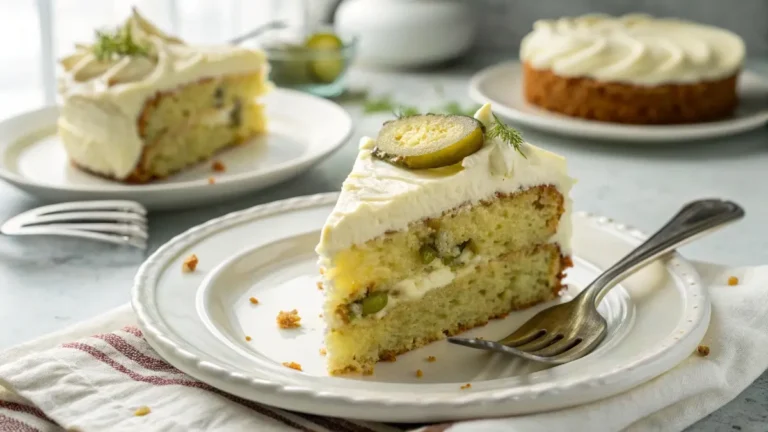
Pickle Cake – Tangy Dessert That’s Surprisingly Good
This pickle cake is a sweet-and-savory twist on classic dessert, combining the tang of dill brine with a soft, rich crumb and smooth cream cheese frosting.
- Total Time: 50 minutes
- Yield: 8 servings
Ingredients
1 1/2 cups all-purpose flour
3/4 cup granulated sugar
1/2 cup sour cream
1/2 cup unsalted butter, softened
2 large eggs
1/4 cup dill pickle juice
1/3 cup finely chopped dill pickles
1 teaspoon vanilla extract
1/2 teaspoon baking soda
1/4 teaspoon salt
Optional: Cream cheese frosting for topping
Instructions
1. Preheat oven to 350°F (175°C). Grease and flour an 8-inch round cake pan.
2. In a mixing bowl, cream together butter and sugar until light and fluffy.
3. Add eggs one at a time, then stir in sour cream and vanilla.
4. In a separate bowl, combine flour, baking soda, and salt.
5. Gradually add the dry ingredients to the wet mixture, mixing just until combined.
6. Stir in pickle juice and chopped pickles until evenly distributed.
7. Pour batter into prepared pan and smooth the top.
8. Bake for 30–35 minutes or until a toothpick inserted in the center comes out clean.
9. Let cool completely, then top with cream cheese frosting and garnish with a pickle chip if desired.
Notes
Use bread and butter pickles for a sweeter flavor twist.
To reduce pickle intensity, start with 2 tablespoons juice and taste.
Pairs well with citrus frosting or herb-infused cream cheese.
- Prep Time: 15 minutes
- Cook Time: 35 minutes
- Category: Dessert
- Method: Baking
- Cuisine: American Experimental
FAQ
What do pickle cupcakes taste like?
They’re tangy with a salty-sweet edge. You get a subtle dill flavor and moist, rich texture—surprising, but oddly delicious when balanced well.
What is the 3-2-1 rule for pickles?
It’s a brine ratio: 3 parts water, 2 parts vinegar, and 1 part sugar. This combo brings just enough acidity and sweetness to pickle—and cake—recipes.
Why does Gen Z love pickles?
Gen Z is into bold flavors and nostalgic snacks. Pickles are intense, meme-worthy, and easily go viral—making them perfect for social food trends like pickle cake.
Why is it called hummingbird cake?
Named after Jamaica’s national bird, hummingbird cake is a Southern favorite made with bananas and pineapple. Like pickle cake, it defies traditional expectations.
Conclusion
Pickle cake isn’t just a quirky recipe—it’s part of a bigger movement. One where bold flavors, nostalgic foods, and online curiosity blend to create something truly unexpected. From the tangy edge of pickle brine to the balance of sugar and acid, this cake turns heads and tempts adventurous bakers.
Whether you’re Gen Z or just pickle-curious, this trend proves dessert can be surprising—and still seriously good. Want to explore more unexpected twists? Try our Sweet and Spicy Honey Pepper Chicken or our trending Bariatric Tea that’s great for gut health and bold on flavor.

